The Dragon fruit comes from ornamental climbing vines and the Cactaceae species. Dragon fruit production can give farmers higher profits, especially in the export market. Dragon fruit can be propagated by seeds, micro-propagation, or by plants. Dragon Fruit, also called Pitaya, is a cactus fruit that is delicious and nutritious.
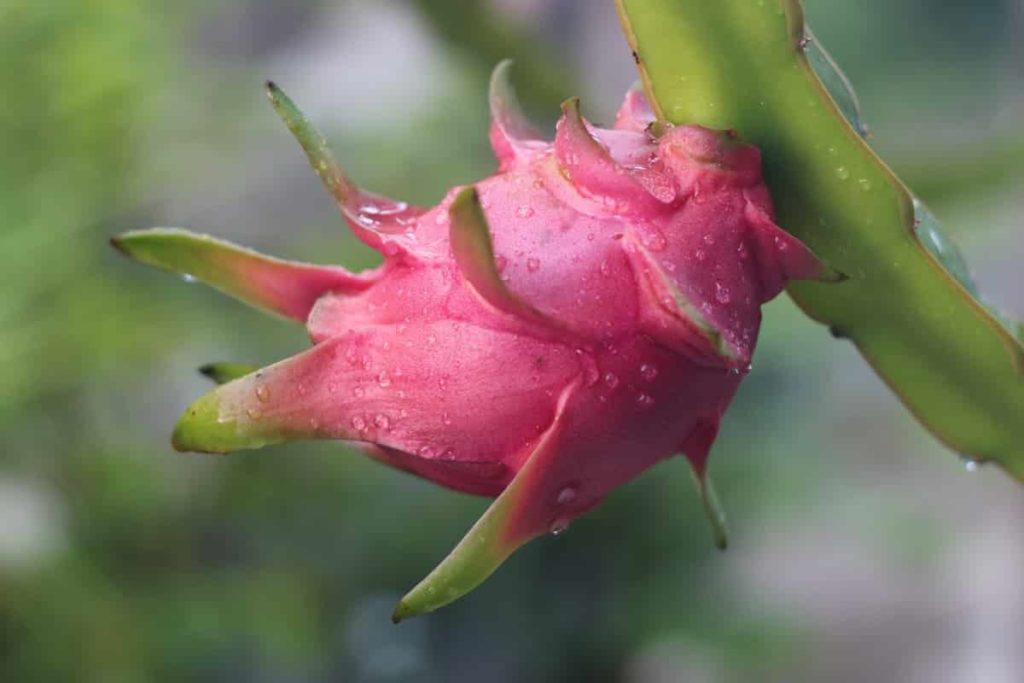
Like other cacti, it is easy to grow. Both flowers and fruits are edible. Dragon fruit bears fruit for many months each year, and with proper care and cultural conditions, it can continue to bear fruit for decades. Let’s check out the top 15 steps to boost Dragon fruit yield.
Top 15 steps to boost Dragon fruit yield
Step 1: Dragon fruit variety selection
There are three types of Dragon fruit in the Hylocereus genus and one species in the Selenicereus genus. All three species, including Hylocereus guatemalensis, Hylocereus polyrhizus, and Hylocereus undatus, and also Hybrids are commercially grown worldwide.
Below we describe the types of Dragon fruit based on their color;
- Red Dragon Fruit – Red Dragon fruit grows on thin, tall, creeping cactus that often grow on fences, trees, or walls. The long, brightly colored fruits are about 10 cm long and can weigh up to a pound.
- Green Dragon Fruit – Dragon fruit produced by Bruni Green Dragon Fruit is green. Bruni green is a surprisingly high-yielding, self-pollinating variety, small in size and weighing an average of 0.3 – 0.7 pounds.
- White Dragon Fruit – This Dragon fruit is a tropical fruit grown in Central America, Southeast Asia, Mexico, and Australia. It has a mild sweet taste and texture between kiwi and pear fruit.
- Yellow Dragon fruit – Yellow Dragon fruit is long in shape and slightly smaller in size than most common red varieties. Their size depends on the weather conditions, and they are often divided into three different size groups.
- Pink Dragon Fruit – The benefits of pink Dragon fruit are sweet and low in calories, and rich in antioxidants.
- Purple Dragon Fruit – It is one of the world’s most beautiful and delicious fruits.
- Black Dragon Fruit – Black Dragon fruit is difficult to describe in terms of Dragon fruit taste. It tastes slightly sweet, delicate on the tongue, and like a raw pear.
In case you missed it: Earning 12 Lakh from Dragon Fruit Cultivation: A Success Story of a Farmer in India
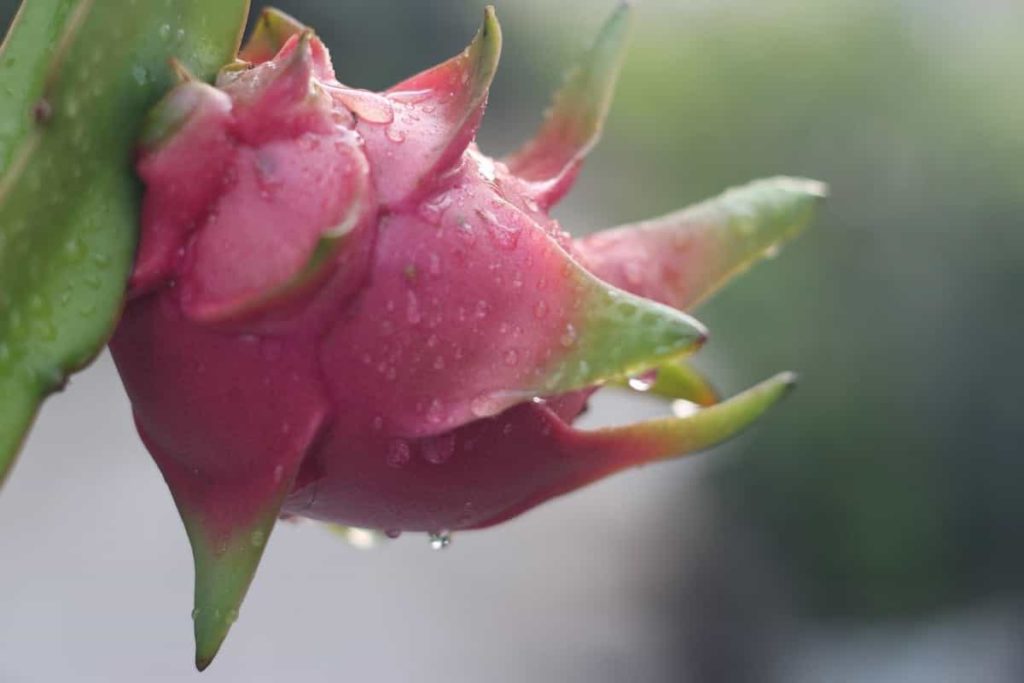
Step 2: Soil and climate is the main factor for successful cultivation
You can grow this fruit in various soils, from sandy loam to loamy soil. The ideal soil for Dragon cultivation is sandy soil with good organic matter and an excellent drainage system. For Dragon fruit farming, a pH level of 5.5 to 7 is best. Dragon fruit plants can tolerate soil; however, they grow well in well-drained soil. Water-retaining soils can cause root rot, and to avoid this toxic element, soil can be mixed with sand or small gravel to facilitate drainage.
It is a tropical fruit with a mild climate all year round. Dragon fruit adapts well to tropical climates. It is a tropical fruit that prefers warm temperatures. Therefore, an environment where the winter temperature does not fall below 40⁰F is suitable for this plant. The area with an annual rainfall of 500-1500 mm is considered ideal for commercial farming. It does not tolerate high humidity. Excess moisture causes flowers to fall and roots to rot. Therefore, it is essential to keep the soil dry.
Step 3: Method of Dragon Fruit Plantation
The most common method of propagating Dragon fruit is cutting. But the seeds take a long time. Therefore, the seed plantation method is unsuitable if you start a commercial Dragon fruit farm. If you want the full benefits of Dragon fruit farming, you must use plant cuttings from a standard mother plant. You should use 20 cm cuttings for planting in the field and need to pile the cuttings two days before planting.
After that, apply them with a mixture of dry cow dung. It would help if you kept a plant-to-plant distance of about 2 meters x 2 meters. For the size of the pit, dig about 60 cm x 60 cm x 60 cm. Also, you will need to fill these pits with topsoil and fertilizer, including 100 grams of superphosphate. You can plant about 1700 plants on 1 acre of land.
Step 4: Methods of growing Dragon fruit
There are two ways to grow Dragon fruit; the first is by using seeds, and the second is by cutting from the plant sampling. It takes about three years for the seeds to mature enough for the plant to be used, so farmers usually opt for the cutting method. The plant should be 20 cm long, cut from the mother plant.
In case you missed it: Organic Dragon Fruit Farming – Cultivation, Business Plan
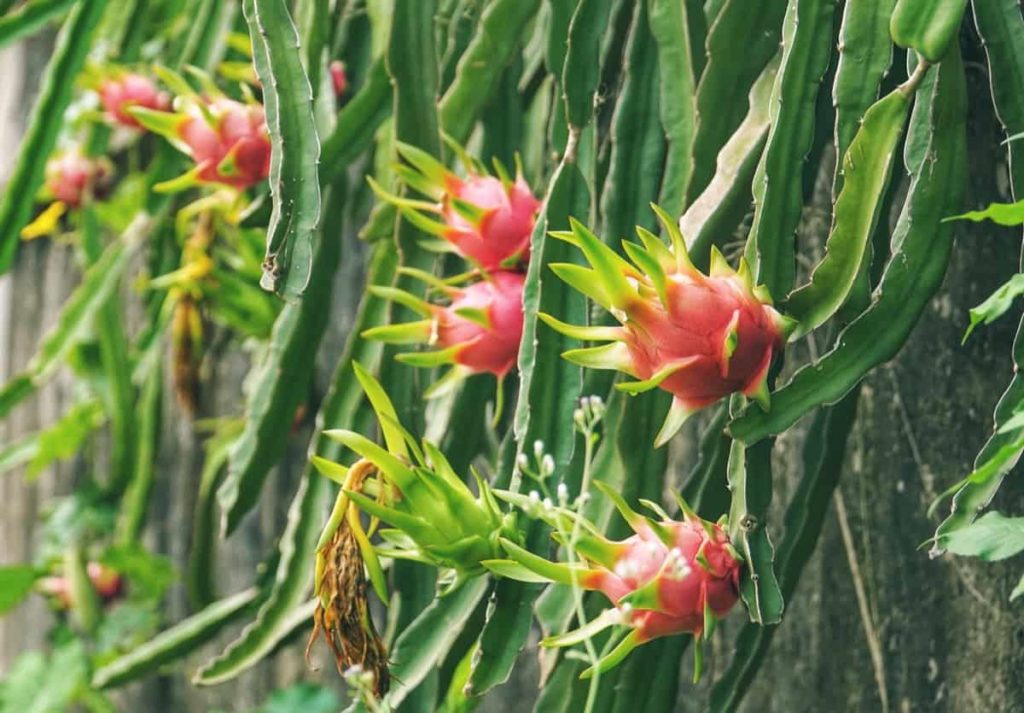
The space between plants depends on whether the support is vertical or horizontal. In vertical support, the distance between plants should be 2-3 meters, while in horizontal support, the distance is reduced to about 50 cm, allowing deep cultivation. The vertical support should be between 1 and 1.20 meters, while the horizontal support should be between 1.40 and 1.60 meters for proper growth.
Step 5: Dragon fruit drop
There are many reasons for the Dragon fruit drop, such as;
- The lack of water
- Too much water
- Not enough nutrients
- Insect and Fungi
Step 6: Irrigation management for fruit growth
Dragon fruit, a cactus, requires much less water than other crops/fruits. It can survive for months without water. The best-recommended irrigation method is drip irrigation. Irrigation by flooding is not recommended for dragons as it wastes water and increases the activity of weeds. On hot/dry days, about 1 to 2 liters of water per plant is sufficient.
Depending on your soil, climate, and plant health, the need for water may increase or decrease. For example, dragon plants can survive with very little rainfall and many months of drought, and a good supply of water is needed when good quality fruit is required.
Step 7: Support for improving crop yield
As a climbing cactus, the Dragon fruit plant needs some help to grow. You can install it under trails, along fences, or with wooden stakes or climbing poles with good results.
Step 8: Weed control for good results
Weed control is an essential process in the cultivation of Dragon fruit, and the use of herb mats effectively reduces the growth of weeds and helps preserve soil moisture.
Step 9: Reasons why Dragon does not bear fruit
There are some possible reasons why your Dragon will not bear fruit. The most likely cause is poor growing conditions. If it is cold, bring your plant indoors or, better yet, take it to the greenhouse to promote flower and fruit production. Another common problem is light. Dragon fruit needs a lot of light to grow, and especially if you are keeping yourself indoors, that may not be enough. Make sure your plant is where the sun rises for six hours daily. If you can’t manage it indoors, keep it under bright lights.
It is also possible that your Dragon fruit may not bear fruit due to a lack of moisture. Because it is a cactus, many gardeners believe that Dragon does not need much water. It keeps its soil constantly moist and watered about an inch (2.5 cm) per week. Dragon fruits are usually produced only in summer when the high temperature and the days are extended. If it is winter, you will not see any fruit. However, you can extend the fruit season by adding the above elements.
In case you missed it: Dragon Fruit Farming Profit, Cost, Yield, Project Report
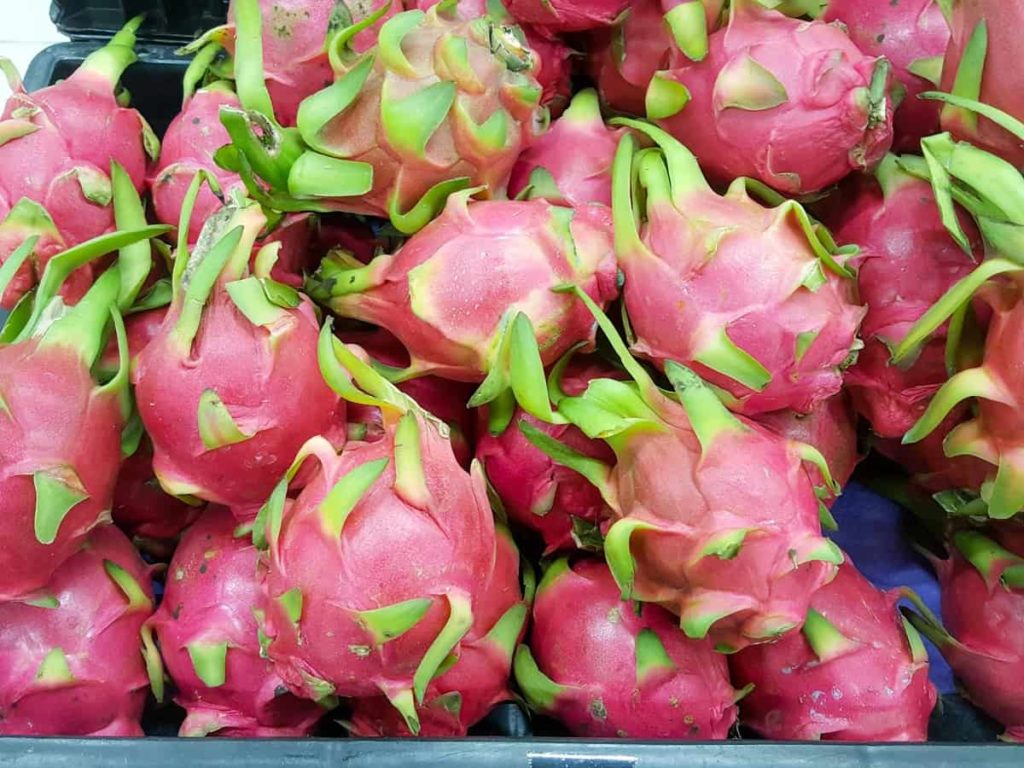
Dragon reaches early maturity and should bear fruit for 20 to 30 years with proper care. Although, proper maintenance is critical. Plants are very tall and can grow up to 40 feet in length. It would help if you gave your cactus a long, strong trail to climb to encourage fruit planting. Permanently remove damaged or dying branches. Cut off the tops of the upper branches to encourage more lateral growth and fruit growth.
Step 10: Reasons for Dragon plant’s not bloom
When Dragon doesn’t bloom, plant care and the environment may need a little adaptation. The following tips can help with Dragon care. If your Dragon does not bloom, try to move the plant to a warmer or safer environment. If the temperature level drops below 18°C, the conditions can be very cold. Some experts prefer to grow Dragon fruit in the greenhouse. Light a spotlight or bright outdoor light on the plant for two hours each night if necessary. In its natural environment, the Dragon fruit cactus grows forest trees.
Provide a strong trellis for your Dragon, then remove the lower stems from where the plant reaches the trellis. Next, regularly trim any dead or damaged growth. Otherwise, your plant will expend a lot of energy repairing the damage. Finally, allow your plant to dry slightly from late spring to early summer. Although Dragon like a lot of moisture, they can help loosen the dry season.
Dragon grows in old leaves and other organic matter in its natural environment. Feed your plant with organic fertilizer. If necessary, modify the soil with fertilizer or mulch. You can also pile dry leaves, fertilizer, or organic matter around the base of the plant once or twice a year.
Step 11: Training and pruning for Dragon fruit development
Dragon’s good training and pruning reach early maturity. If you don’t train it properly, it will bend down before reaching the top of the trellis. Tying it to the trellis as the Dragon fruit grows supports its upward growth. Many side shoots that appear in the early stages should be removed. Be careful when cutting the side shoot and not damage the main shoot. To keep your plant disease-free and grow properly on its support system, cut off any dead, dying, diseased, or overgrown branches.
In case you missed it: Frequently Asked Questions About Dragon Fruit Farming
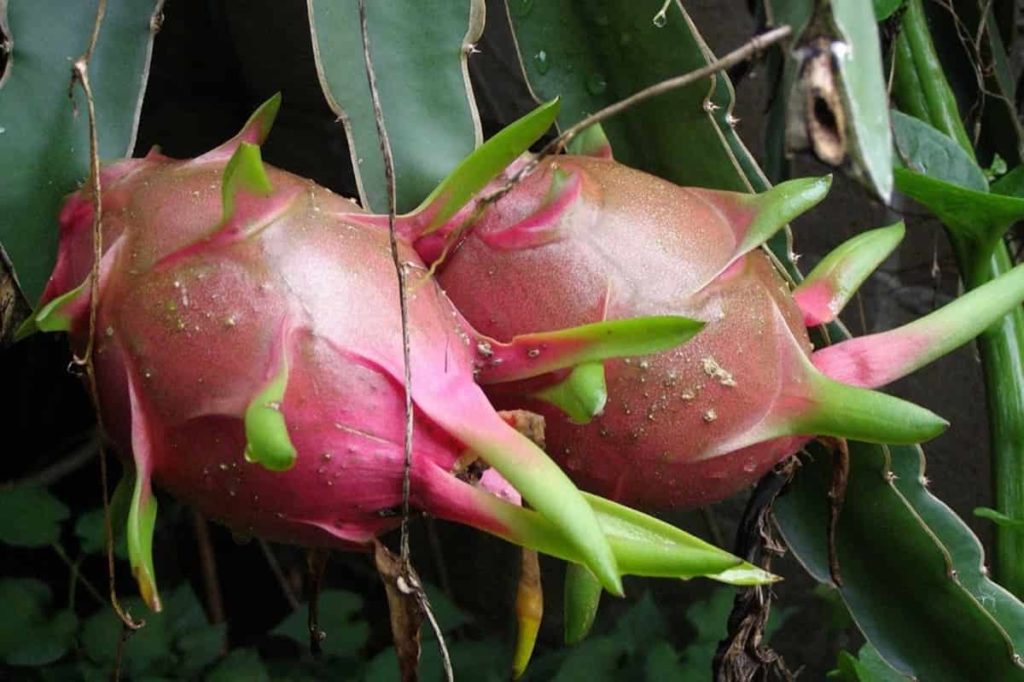
If you fail to prune your Dragon fruit cactus, fungal disease and pest infestation will increase. In addition, it can result in poor access to light for tangled center stems, affecting fruit production. Regular pruning also encourages flower growth and prevents the plant from becoming too heavy for its growing trails.
If you are lucky (or have a small plant), you can run away with an annual pruning session, which can be done after you harvest the fruit. First, cut off your Dragon fruit plant’s dead or damaged branches and stems. It will help your plant focus its nutrients on growing fruits instead of trying to use that energy to heal damaged plant parts.
Step 12: Fertilizers and manures increase the productivity of the Dragon fruit farm
Proper nutrition is required for better crop yields. The root system of the Dragon fruit plant is superficial and can absorb even the smallest amount of nutrients quickly. Organic fertilizers play an important role in the good growth and development of the plant. Treat each plant with at least 10 to 15 kg of organic compost. Fertilizer ratio is Muriate of Potash: Super Phosphate: Urea = 40:90:70 grams / plant.
Different fertilizers should be applied from flowering to harvesting stages, including urea: superphosphate: Muriate of potash = 50: 50: 100 grams/plant. This fertilizer solution can be given before flowering, before fruiting, and after harvesting. It can increase the Dragon fruit farm productivity.
Step 13: Dragon fruit flower buds turn yellow
Dragon flower buds will turn yellow for a few reasons. The first reason is that they cannot be fertile. If so, you will need to cross-pollinate the flowers. Another reason is that bad weather conditions can be very wet or very dry, in which case you have to make sure that you are not pouring too much water, and if the temperature is too hot, then the plant should be exposed to direct sunlight. Finally, you may have a sterile plant that must be cross-pollinated.
In case you missed it: Growing Dragon Fruit In Pots, Containers, Backyards
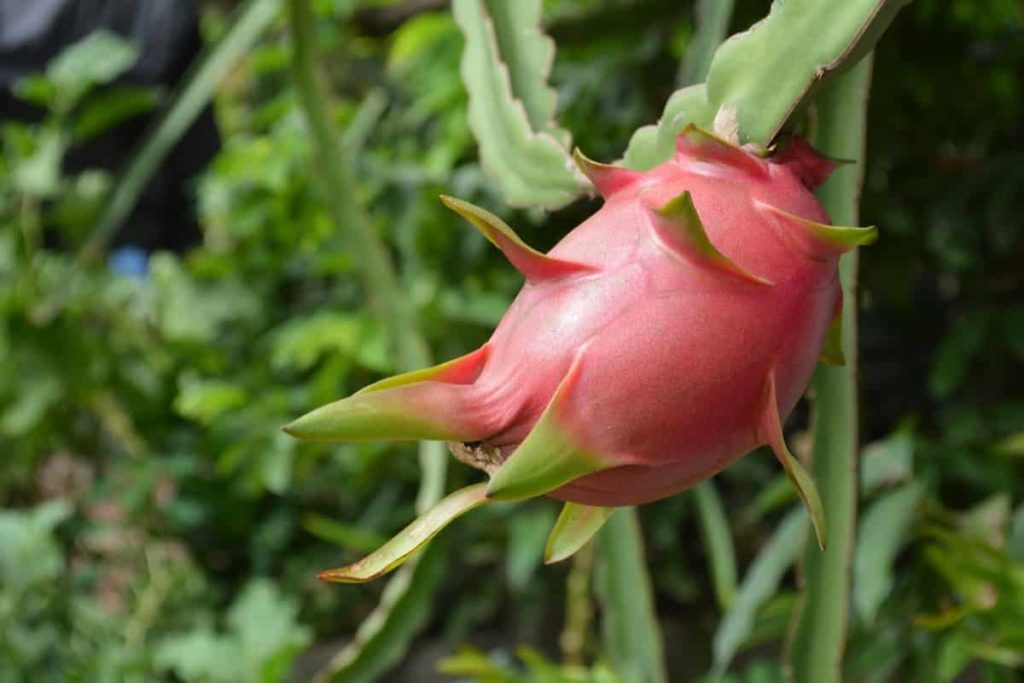
Step 14: Pest and disease management for increasing crop yield
This crop is free from pests and diseases. Proper drainage facilities and dry, shady areas for plants are ideal for protection against pests and diseases. Wild animals may find your Dragon fruit crop attractive depending on where you live. Dragon plants are attractive to ants, mealybugs, mites, and slugs. Stem and fruit canker and rot can also be a problem for Dragon fruit cacti. Ensure Dragon gets the right amount of sun, moisture, and air circulation to avoid this problem.
Step 15: Harvesting time improves crop yield
Harvesting Dragon fruit takes 27-30 days for the fruit to grow fully. Therefore, dragon fruits should be picked as soon as they are fully developed, as a delay of 4 to 5 days can cause them to rot. The yield per hectare can vary from 10 to 30 hectares depending on the conditions. The technique of lifting it is to pull it by rotating it clockwise.
Cultivate Dragon fruit when its skin color changes from bright green to red or pink. The fruit is oval, 10 to 15 cm long, and forms 30 to 50 days after flowering. Dragon fruit per carp is rough and is pink in color. However, there are also different types of red or yellow Dragon fruit.
- Economical Aquaculture: A Guide to Low-Budget Fish Farming
- 15 Common Planting Errors That Can Doom Your Fruit Trees
- How to Make Houseplants Bushy: Effective Tips and Ideas
- Innovative Strategies for Boosting Coconut Pollination and Yield
- Pollination Strategies for Maximum Pumpkin Yield
- The Complete Guide to Chicken Fattening: Strategies for Maximum Growth
- Natural Solutions for Tulip Problems: 100% Effective Remedies for Leaf and Bulb-Related Issues
- Revolutionizing Citrus Preservation: Towards a Healthier, Greener Future
- Natural Solutions for Peony Leaf and Flower Problems: 100% Effective Remedies
- Maximizing Profits with Avocado Contract Farming in India: A Comprehensive Guide
- Natural Solutions for Hydrangea Problems: 100% Effective Remedies for Leaf and Flowers
- The Ultimate Guide to Choosing the Perfect Foliage Friend: Bringing Life Indoors
- From Sunlight to Sustainability: 15 Ways to Use Solar Technology in Agriculture
- The Ultimate Guide to Dong Tao Chicken: Exploring from History to Raising
- The Eco-Friendly Makeover: How to Convert Your Unused Swimming Pool into a Fish Pond
- Mastering the Art of Delaware Chicken Farming: Essentials for Healthy Backyard Flocks
- 20 Best Homemade Fertilizers for Money Plant: DIY Recipes and Application Methods
- How to Craft a Comprehensive Free-Range Chicken Farming Business Plan
- Brighten Your Flock: Raising Easter Egger Chickens for Beauty and Bounty
- How to Optimize Your Poultry Egg Farm Business Plan with These Strategies
- Subsidy for Spirulina Cultivation: How Indian Government Schemes Encouraging Spirulina Farmers
- Ultimate Guide to Raising Dominique Chickens: Breeding, Feeding, Egg-Production, and Care
- Mastering the Art of Raising Jersey Giant Chickens: Care, Feeding, and More
- Ultimate Guide to Raising Legbar Chickens: Breeding, Farming Practices, Diet, Egg-Production
- How to Raise Welsummer Chickens: A Comprehensive Guide for Beginners
- How to Protect Indoor Plants in Winter: A Comprehensive Guide
- Ultimate Guide to Grow Bag Gardening: Tips, Tricks, and Planting Ideas for Urban Gardeners
- Guide to Lotus Cultivation: How to Propagate, Plant, Grow, Care, Cost, and Profit
- Agriculture Drone Subsidy Scheme: Government Kisan Subsidy, License, and How to Apply Online
- Ultimate Guide to Raising Araucana Chickens: Breed Profile, Farming Economics, Diet, and Care
- Bringing Hydroponics to Classroom: Importance, Benefits of Learning for School Students
- Ultimate Guide to Raising Polish Chickens: Breed Profile, Farming Economics, Diet, and Care
- Ultimate Guide to Raising Australorp Chickens: Profile, Farming Economics, Egg Production, Diet, and Care
- Silkie Chicken Farming: Raising Practices, Varieties, Egg Production, Diet, and Care
- Sussex Chicken Farming: Raising Practices, Varieties, Egg Production, Diet and Care
- Homemade Feed Formulations for Livestock: Discover Cost-effective Starter to Finisher Feed Recipes